10 Blue Ribbon Secrets that Grandma Used to Grow the Best Heirloom Tomatoes
Grandma was no sloucher. Every year she started planning for the Fall Fair in January, with the seed catalogues, a cup of herbal tea, her garden journal, and a black marker. With her shorter growing season, there were no second chances. Grandma knew the blueprint to get that coveted blue ribbon for the best heirloom tomatoes. A win at the fair meant a few extra dollars for seeds, garden tools, and maybe lunch at the fair. With these 10 secrets you, too, can get that coveted blue ribbon for the best heirloom tomatoes.
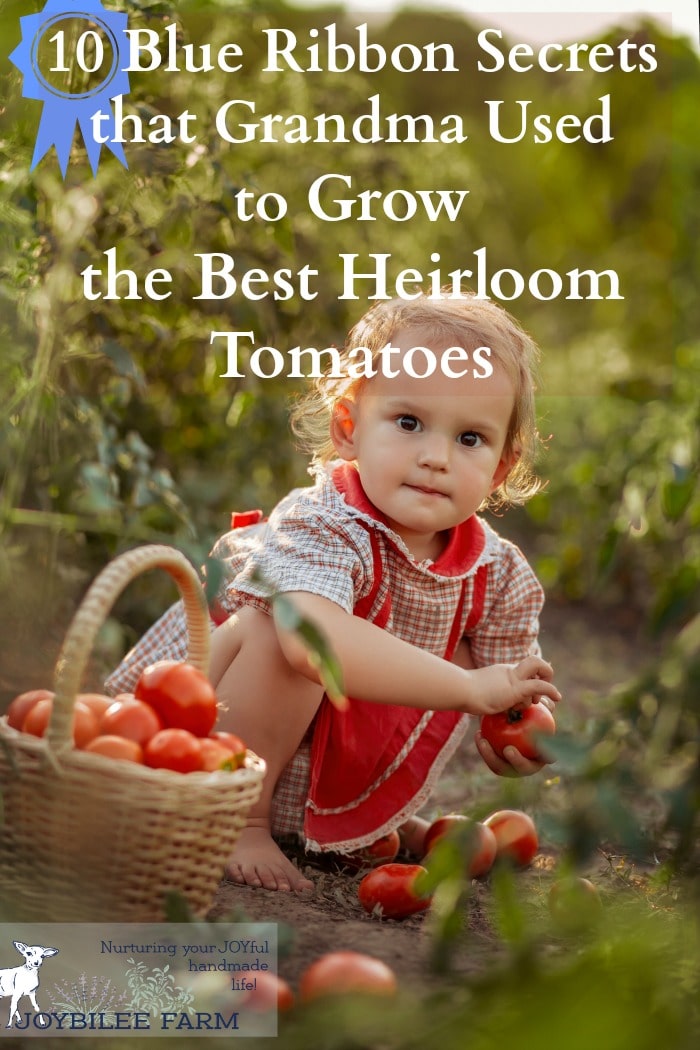
1. Grandma chose her seeds wisely
Buy your heirloom tomato seeds from the best heirloom tomato seed source
Growing good tomatoes begins with the best quality seed. You may be surprised to know that different seed companies have different standards for germination rates and the age of their seed. I’ve consistently had stellar germination from Baker Creek Seed. In fact this week, I did a germination test on Telegraph Cucumber seeds that I purchased from Baker Creek Seed in 2012. Cucumber seed has a short life of about 3 years. But this Baker Creek Seed had 100% germination. Last year I grew some heirloom purple cauliflower from 7-year-old Baker Creek Seed. I planted way too many, thinking I’d have poor germination because the seed was so old. But I think every seed germinated.
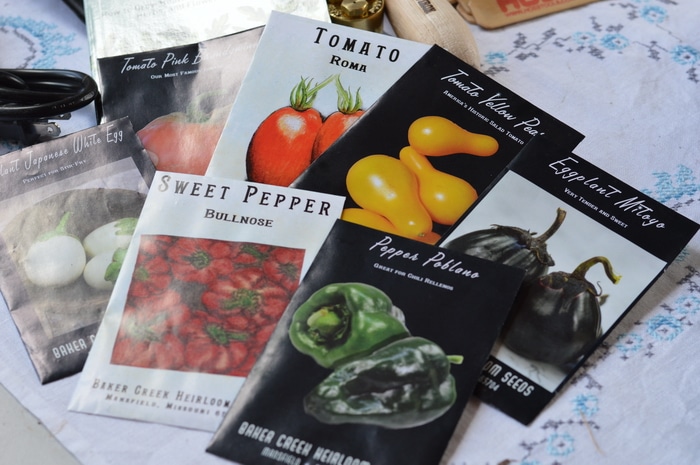
Understand the length of your growing season and choose varieties that will ripen within that time frame
If you live in a short-season area you’ll have the best success for vine-ripened heirloom tomatoes if you choose a variety that can ripen in the frost-free window that you have. “Days to harvest” or “Days to maturity” information on seed packages are a guideline only. The phrase means that in some location, given the amount of sunlight and rainfall that was available, a single tomato was ripe within that number of days. The number of days is counted from the day that the tomato plant is transplanted into the garden, not from the day of planting the seed. This is true for peppers and eggplant as well, since most gardeners start these three plants indoors and transplant them out when the soil has warmed up.
If your last frost date was May 24th and your first frost date is September 10th, you have 109 days frost-free. If you choose tomatoes that are 90 days to maturity, you won’t be eating tomatoes till the end of August, and you’ll be harvesting a lot of green tomatoes in September. In fact, your tomato plants will just be revving up when the first frost kills the vine. But if you choose a tomato variety that matures in 75 days, you’ll be eating tomatoes at the end of July and you’ll have a good chance of ripe tomatoes right into September.
2. Grandma chose from determinate and indeterminate plants
Heirloom tomatoes are almost always indeterminate, with just a few exceptions. This means they grow a large vine and set fruit over a long period. The fruit on an indeterminate plant will mature over the season, and allow for multiple pickings. These plants need more than just a tomato cage for support. Provide them with a trellis or other support to keep the vines disease-free. Indeterminate plants are especially suited to fresh eating since the fruit develops over the long season. On the other hand, determinate plants grow a stocky plant that does very well in containers. These do fine with just tomato cages for support. Determinate plants mature most of their fruit all at once, allowing for ample fruit for canning and preserving. Roma tomatoes are an heirloom variety with a determinate growth habit.
3. Grandma chose her heirloom tomatoes for colour, shape, taste, and size
Having a wide variety of colours, shapes, and sizes allows for gorgeous salads, preserves, and displays for the fair. There are lots of red beef steak-type tomatoes to choose from and this is what most people grow. But there’s a huge variety to choose from and these can make your farm stand, fair entry, and dining room table really stand out. Plus these other varieties have a different mix of acidity and sweetness for the ultimate test of a homegrown tomato – the taste test.
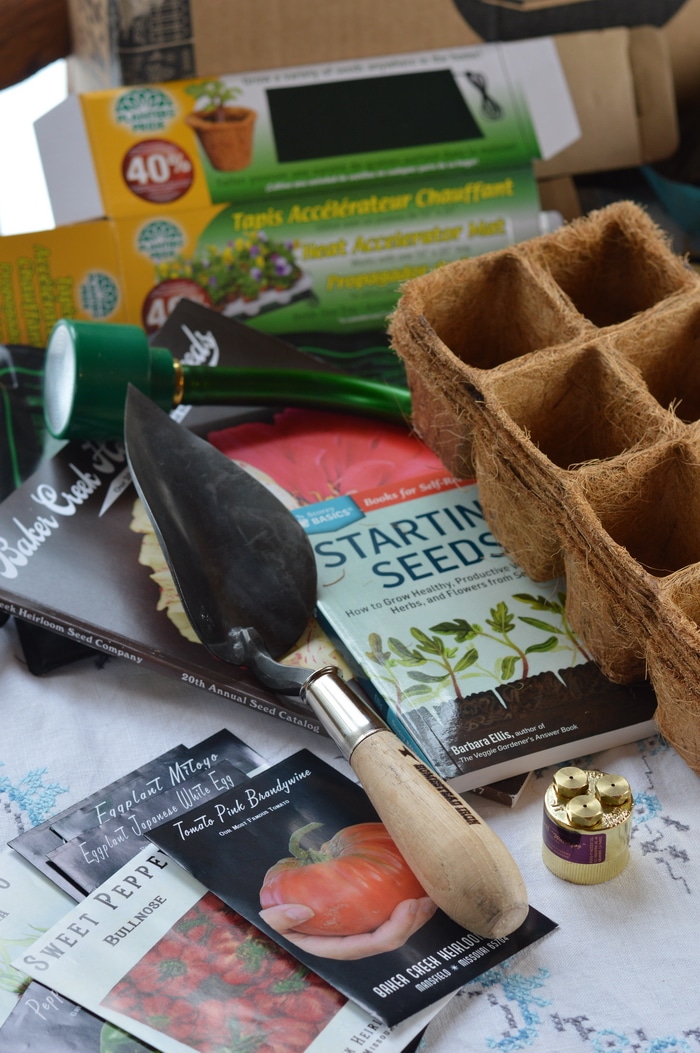
4. Grandma started her seedlings indoors
In most areas in the Northern Hemisphere tomatoes need to be started indoors. Start your seed 8 weeks before your last frost date or before you plan to plant them out in the greenhouse.
Plant just three seeds per pot. You’re going to destroy the weakest of these seedlings. So there’s no need to plant more. If your seed has good germination all three seedlings will sprout. After these have their first true leaves, pinch out the two weakest seedlings from each pot. This will leave you one strong seedling to continue growing.
Use cinnamon to protect against damping-off and other fungal diseases. You may not get a second chance. Cinnamon is cheap and widely available. Sprinkle cinnamon on the soil when you first plant the seed. Water the pot from the bottom only. Reapply cinnamon after watering or if you see any white mold beginning to form on the surface of the potting soil.
Place your seed pots on a germination mat to provide even heating under the pots. Germination heat improves germination rates considerably.
Always provide supplemental lighting for seedlings. In the north, window lighting is not strong enough. Supplemental lighting placed within 6 inches of the tops of the plants allows the plants to grow stalky and strong.
Check your light bulbs if you’ve had them for more than two seasons. The light may be dim, even if it seems that the light is strong enough. It’s a good idea to replace fluorescent light bulbs at the beginning of each season for optimal plant growth.
5. Grandma prepared the best spot in the garden to plant her tomatoes
Before you plant the seedlings out in the garden, after the soil has warmed up and all danger of frost has passed, prepare the soil. Tomatoes need fluffy soil and full sun. Amend the soil with organic matter, finished compost, and a little seaweed for best growth.
When transplanting, plant the tomato plant lower than it was originally. It will form a stronger root system. Every inch of stem below the soil surface will produce roots, anchoring the vine well.
Provide a tomato cage for determinate tomatoes or a trellis for indeterminate tomatoes. This will keep the plants from sprawling over the ground and getting fungal diseases.
After the soil has warmed up, mulch the plants to prevent soil evaporation. If you live in a colder area, black plastic mulch or black landscape fabric can increase soil temperatures. Red plastic mulch has been found to speed up ripening.
Water splashing on the leaves of the plants can cause mildew and blight on tomato plants, killing the vines and spoiling any tomatoes that are ripening on the plant. Prevent fungal diseases by setting up a drip irrigation system. If you are watering by hand, only water the soil. The tomato leaves and fruit should remain dry to prevent fungal diseases. If you are in an area where late blight is common, cover the tomato plants with a cloche to protect them from rain.
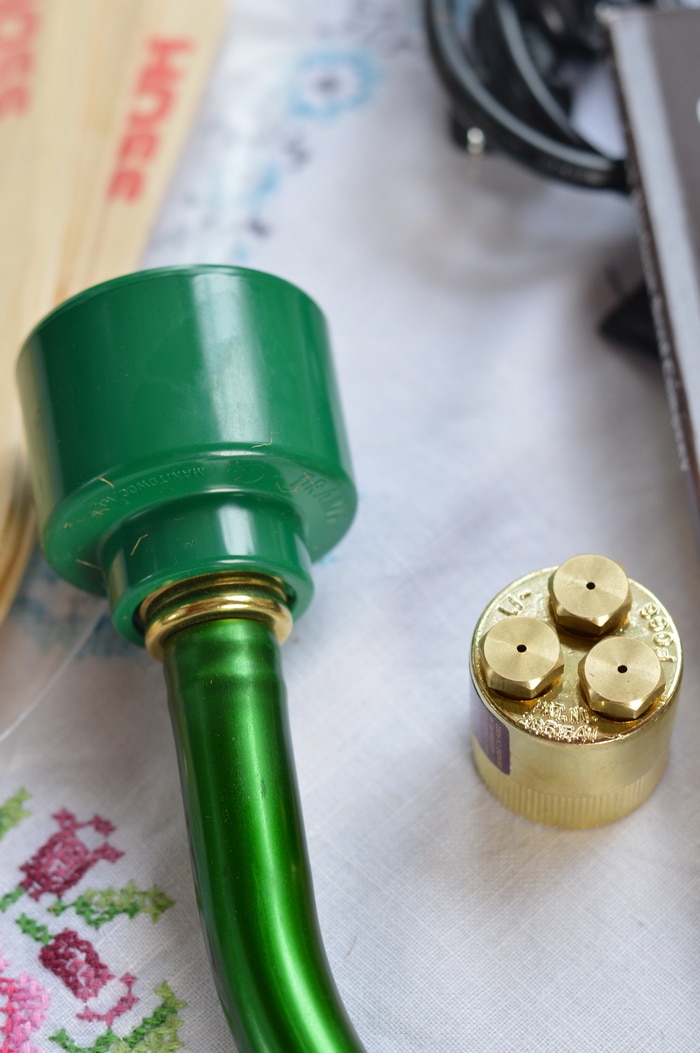
6. Grandma gave her blue ribbon heirloom tomatoes the best care
Provide consistent watering, at least an inch of water a week.
Check the plants weekly for tomato hornworm, whitefly, mites, or flea beetle infestations. Hand-picking, vacuuming, and spraying with water, can help to upset the life cycle of these pests. Since you want to keep the leaves dry, spray only in the mid-morning so that the leaves have a chance to dry before the dew comes. Companion planting with umbellifer plants can attract predatory insects that will interrupt the life cycle of these pests, giving you long-term relief.
Fertilize every other week with diluted fish emulsion or liquid kelp fertilizer to give the plants the nutrients they need to grow strong. But don’t over-fertilize with nitrogen or you’ll have huge plants with few flowers and fruit.
7. How Grandma grew the largest heirloom tomatoes
Up till now, I’ve told you how grandma grew the best heirloom tomatoes, but winning at the fair requires some secret sauce. For grandma’s fair entries she set a few tomato plants aside for special treatment.
For the largest blue-ribbon tomatoes, train these special tomato plants to only one main stem. Remove all suckers, so that the plant puts its energy into a strong support structure.
Allow only 3 to 5 fruit to develop per plant. Remove the immature fruit from the top of the vine. Keep the fruit that is closest to the main stem. As the plant sets fruit it won’t have to work as hard to grow these winning fruit.
Prevent branches from breaking by providing sling supports for these growing tomatoes using pantyhose or stretchy t-shirts.
Keep pruning off the suckers as the growing season progresses. It takes about 2 to 3 weeks to go from flower to ripe tomato. Check the fair dates and count backward. If your fair is Labour Day weekend you want flowers to set around the second week of August. Help them along by shaking the flower cluster to ensure good germination. Once the fruit begins to develop remove all the immature fruit except for one tomato from each cluster.
Water the plants consistently with at least one inch of water each week. Inconsistent water can cause the tomatoes to split before they are ripe. Cherry tomatoes are especially susceptible. Mulching the soil surface, even on container-grown plants, can help. Container-grown tomatoes may need daily watering in the heat of summer.
The fruit grandma took to the fair was harvested while it was slightly immature but in the best condition. Fruit left to ripen on the vine may taste better, but for the fair, the fruit needed to be perfect. By harvesting the fruit on the immature side, grandma insured that her tomatoes would be perfect on the day of the judging.
8. Grandma knew the rules for each category at the fair by heart
Don’t assume anything. Read the fair catalogue. Check the rules. If the category calls for 5 tomatoes on a paper plate, don’t bring 3 tomatoes and place them on china. You’ll be disqualified. If the category calls for yellow tomatoes, don’t enter orange tomatoes. On the other hand, within the rules, there is a lot of room for display creativity.
9. Grandma didn’t limit her chances of winning to just one category
Grandma entered the “biggest tomato”, “the most unusual vegetable”, “the best heirloom tomato”, “red tomato”, “cherry tomato”, “Sauce tomato”, “Most colourful vegetable”, “Purple vegetable” and “rainbow vegetable display”. She knew that you’ve got a better chance of winning if you enter more times.
Grandma didn’t limit her entries to the garden/farm barn. She also entered the canning, preserves, winemaking, dried fruit, and green tomato relish categories. If your tomatoes didn’t turn out as you had hoped, all is not lost. Turn them into salsa, tomato jam, green tomato relish or any of the other categories in the completion. Half the fun is the DIY projects that the fair encourages. The blue ribbon is just extra.
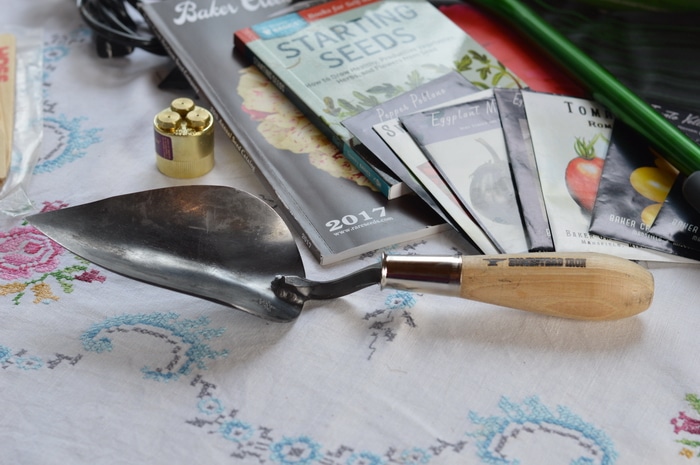
10. Grandma invested in quality garden tools, organic soil, and garden seeds so that her chances of winning were enhanced.
Your garden tools are an investment that provides years of service if they are maintained well.
Quality garden seeds that are suited to your climate and growing zone are the foundation of successful gardening. Choose your seeds wisely.


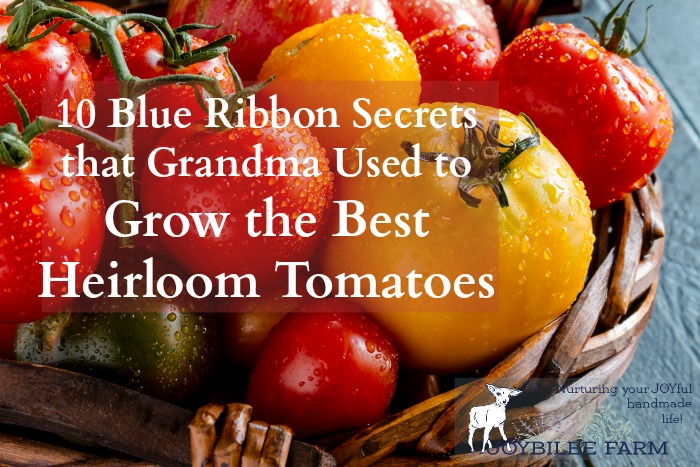




We do not know if Gandma would use hybrid seeds or GEO seeds, because she died before they came on the market.
I do not use GEO seed, but I can not speak to persons who never had a chose.